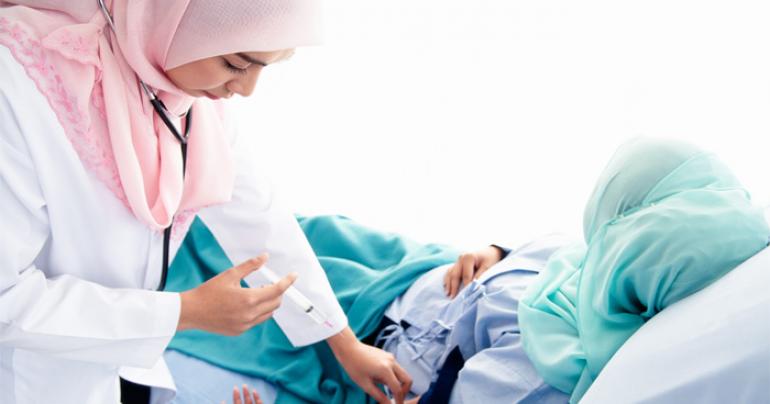The average Omani family spends OMR9 a month on health
Muscat: An Omani family spent OMR9 on an average every month on medicare during 2018-2019, according to the Health Statistics Bulletin for the period released recently by the National Centre for Statistics and Information (NCSI).
The bulletin also pointed out that the health sector accounted for 5.7 per cent of total government spending and contributed 2.9 per cent to the GDP which amounted to OMR843.5 million.
In all, there were 1, 610 healthcare institutions in the Sultanate of which 58 per cent or 937 were private clinics. There were 83 public hospitals and 590 health complexes and centres, the bulletin added.
Titled “A pioneering health system with international standards” the bulletin also showed that the percentage of hospital beds against the country’s population had registered a fall and at the end of 2019, stood at 15 beds per 10,000 inhabitants compared to 15.6 beds per 10,000 inhabitants in 2015.
The Health Statistics Bulletin showed that the total number of medical cadres in the public and private sectors in the Sultanate, including doctors, dentists, nurses and pharmacists, by the end of 2019 reached 34,062, with about 9,602 out of the them being doctors. There were 7,045 doctors in the government sector, and 2,557 doctors in the private sector.
The number of dentists reached 1,494, including 371 dentists in the government sector and 1,123 dentists in the private sector.
There were 20,323 nurses, with 16,245 in the government sector, and 4,078 in the private sector.
The number of pharmacists in the Sultanate until the end of 2019 reached 2,643 pharmacists, with about 848 in the government sector and 1,795 in the private sector.
As for Omanisation in the health sector, the data points out that the percentage of national workforce in the Sultanate’s health sector increased by 7 per cent in 2019, compared to 2015. The percentage of national workforce in nursing went up by 11 per cent, compared to 2015, while Omanisation among nursing staff in the private sector remains 3 per cent in 2019.
The percentage of Omani doctors in the private sector was only 5 per cent. In terms of population, the number of doctors in the Sultanate fell from 21.4 per 10,000 people in 2015 to 20.8 per 10,000 people in 2019. The number of nurses fell from 46.3 nurses per 10,000 people in 2015 to 44 per every 10,000 people in 2019.
As for the indicators of health in the Sultanate, the bulletin shows that the percentage of immunisation coverage for children in 2019 reached 100 per cent, while the doses of tetanus immunisation provided to pregnant women reached 17,033 first doses and 38,878 second doses or more.
New cases of malnutrition related to protein deficiency fell from 854 in 2015 to 491 in 2019, while the rate of malnutrition cases for children under the age of five decreased from 2.2 per 1,000 children in 2015 to 1.2 per 1,000 in 2019.
The bulletin also points out that the percentage of new births attended by skilled health professionals reached 98.6 per cent, while the maternal mortality rate decreased from 17.5 cases of death per every 100,000 live births in 2015 to 10.3 cases of death per every 100,000 live births in 2019.
However, the deaths due to complications of pregnancy, child birth and postpartum increased in the public hospitals from 5 cases in 2015 to 6 cases in 2019.
As for the non-communicable diseases in the Sultanate, the bulletin shows that the year 2019 witnessed the registration of 6,430 new cases of diabetes, with about 54 per cent of them being females. The number of in-patients with tumours in the Sultanate reached 5,386, with about 63 per cent of them being malignant tumours.
In terms of infectious diseases, the bulletin shows that with 10,139 patients, varicella (German smallpox) was at the forefront of diseases reported in 2019, followed by 1,338 patients with malaria. Other infectious diseases, such as the food poisoning, binary infectious sources, affected 606 patients.
There were 368 patients with pulmonary tuberculosis, 260 patients with hepatitis, 134 cases with viral hemorrhagic fever (VHF) and 109 cases with dengue fever.
As for deaths, the NCSI bulletin shows that the diseases of the circulatory system topped the causes of death in the Sultanate, with 955 cases of deaths in 2019, followed by respiratory diseases with 630 cases of deaths. Tumours caused 504 cases of deaths and infectious and parasitic diseases caused 341 cases of deaths. About 287 cases of death were caused by the side effects of postpartum period.
The data also pointed out that infant mortality rate decreased from 9.5 cases per 1,000 live births in 2015 to 7.9 cases in 2019, while the mortality rate for children under the age of five years decreased to 10.1 cases in 2019, compared to 11.5 cases in 2015.
The Health Statistics 2020 Bulletin is available in the Publications section on the portal of NCSI website: www.ncsi.gov.om. Those interested can access and download it in PDF format as well.
tag: omannews , omanlatestnews , muscatnews
Share This Post






